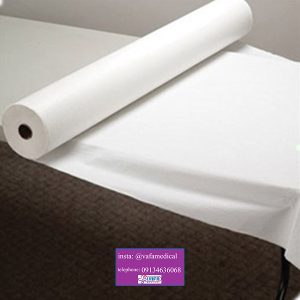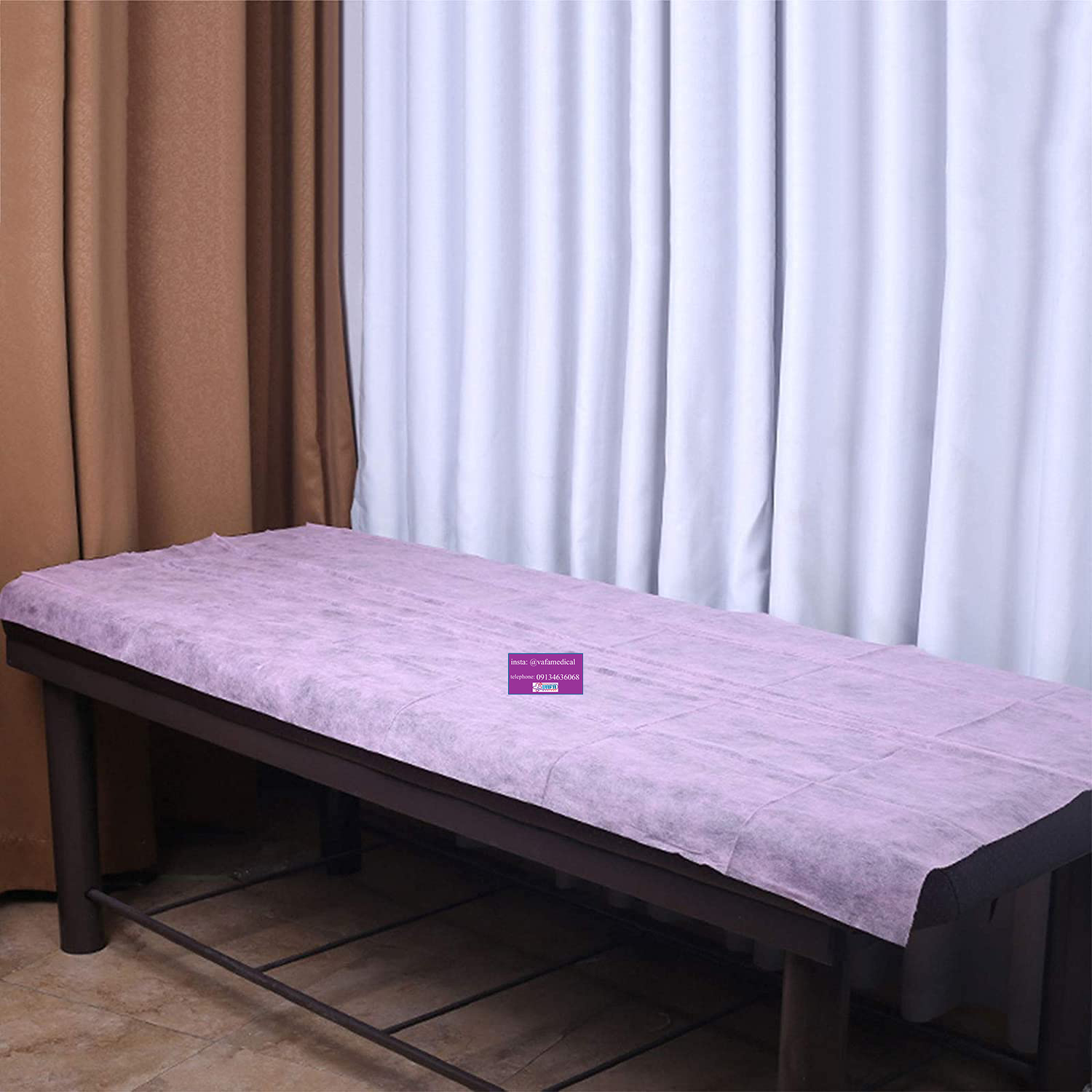Dear customers, they can save a lot on their expenses by buying disposable hospital bed sheets with rolly and elastic spunbond. For example, it is very suitable for airlines, public and private hospitals, clinics, dentists and any public places where disposable sheets need to be changed, such as hotels and hostels.

Hospital sheets are typically designed for durability, ease of cleaning, and patient comfort. They are often made from a blend of cotton and polyester or a combination of other synthetic materials. These materials are chosen for their ability to withstand frequent washing and sterilization while remaining comfortable for patients.
Hospital bed sheets may also feature special characteristics such as moisture-wicking properties to keep patients dry and comfortable, as well as being hypoallergenic to minimize the risk of allergic reactions. Additionally, they often come in a standard size to fit hospital beds and may have elastic corners to ensure a secure fit.
The color of hospital bed sheets can vary depending on the hospital’s preferences, but they are often white or light-colored to easily detect stains or spills. Some hospitals may also use color-coded sheets to help staff quickly identify different sizes or types of sheets.
Overall, hospital bed sheets are an essential component of patient care, providing both practical functionality and comfort during hospital stays.

Here are some additional aspects about hospital bed sheets:
1. **Thread Count**: While thread count is often a measure of quality for regular bed sheets, it’s less relevant for hospital sheets. They typically have a lower thread count, focusing more on durability and ease of laundering rather than luxurious softness.
2. **Anti-Microbial Treatment**: Some hospital sheets may undergo anti-microbial treatment to reduce the risk of bacterial growth and infection transmission. This treatment can help maintain a hygienic environment for patients.
3. **Flame Resistance**: Hospital sheets may be treated to be flame-resistant in accordance with safety regulations. This is particularly important in healthcare settings where the risk of fire exists.
4. **Disposable vs. Reusable**: Depending on hospital protocols and patient needs, bed sheets may be either disposable or reusable. Disposable sheets are often used in situations where infection control is a high priority or when dealing with patients who have specific medical conditions.
5. **Size Variations**: Hospital beds come in different sizes, and accordingly, bed sheets are available in various sizes to accommodate these beds. Common sizes include standard, twin, full, and queen. Additionally, hospital bed sheets may have different depths to accommodate various mattress thicknesses.
6. **Specialized Sheets**: In certain medical situations, specialized bed sheets may be used. For example, pressure-relieving sheets are designed to reduce the risk of pressure ulcers in immobile patients, while bariatric bed sheets are designed to fit larger-sized hospital beds.

7. **Elasticity and Fastening Mechanisms**: Hospital sheets often feature elasticized corners or fastening mechanisms to ensure a snug fit on the mattress. This helps prevent the sheet from slipping or bunching up, which could cause discomfort for the patient.
8. **Environmental Considerations**: With increasing awareness of environmental sustainability, some hospitals may opt for eco-friendly options when it comes to bed sheets. These may include sheets made from organic cotton or other sustainable materials, as well as sheets that are certified by eco-labels for their environmental friendliness.
These are just a few more details about hospital sheets and their characteristics. Let me know if you’d like to delve deeper into any specific aspect!



